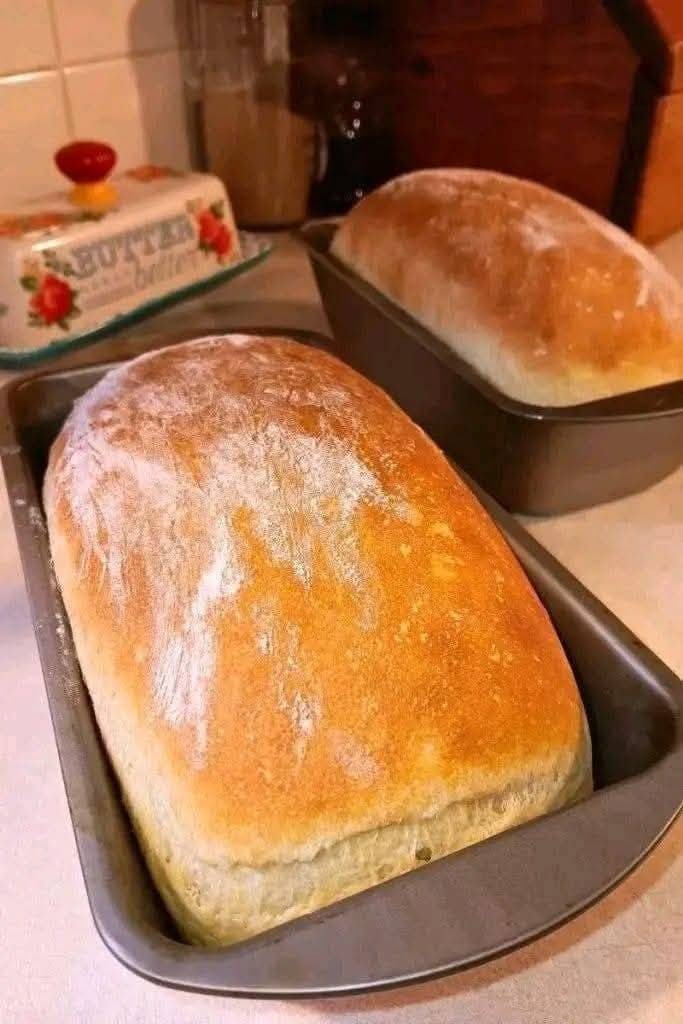ADVERTISEMENT
Instructions:
1. Activate the Yeast:
Start by activating the yeast. In a large mixing bowl, combine the warm water and 2 tablespoons of sugar. Stir gently until the sugar dissolves. Sprinkle the active dry yeast over the surface of the water, giving it a quick stir. Let this mixture sit for about 5-10 minutes, or until it becomes frothy and bubbly. This step is crucial for ensuring that the yeast is active and ready to help your dough rise.
2. Prepare the Dough:
Once your yeast mixture is bubbly, add the vegetable oil, salt, and 1/4 cup sugar to the bowl. Stir well to combine. Then, start adding the flour, a little bit at a time, mixing after each addition. Continue adding flour until the dough comes together into a soft ball that’s not too sticky. Depending on the humidity and the flour you use, you may need more or less flour. The goal is to achieve a dough that is soft but not overly sticky.
3. Knead the Dough:
Transfer the dough to a lightly floured surface and knead it for about 5-7 minutes. To knead, press the dough down with the heels of your hands, fold it over, and then turn it a quarter turn. Repeat this process until the dough is smooth and elastic. If the dough feels too sticky, you can add a little more flour, but be careful not to add too much as it could make the bread dense.
4. First Rise:
After kneading, form the dough into a ball and place it in a large, lightly oiled bowl. Turn the dough once to coat it in the oil, then cover the bowl with a clean kitchen towel or plastic wrap. Let the dough rise in a warm place for about 1 to 1 1/2 hours, or until it has doubled in size.
5. Shape the Loaf:
Once the dough has risen, punch it down gently to release the air. Turn the dough out onto a lightly floured surface and shape it into a loaf by flattening it into a rectangle and then rolling it up tightly, pinching the seams closed. Place the shaped dough into a greased 9×5-inch loaf pan, seam side down.
6. Second Rise:
Cover the loaf pan with a clean towel and let it rise for another 30-45 minutes, or until the dough has risen just above the edge of the pan. During this time, preheat your oven to 350°F (175°C).
7. Bake the Bread:
Once the dough has risen, place the loaf pan in the preheated oven. Bake for 30-35 minutes, or until the top is golden brown and the loaf sounds hollow when tapped on the bottom. If you have a kitchen thermometer, the internal temperature should reach about 190°F (88°C) when done.
8. Cool and Enjoy:
Remove the loaf from the oven and allow it to cool in the pan for about 10 minutes. Then, transfer the loaf to a wire rack to cool completely. Slice once it’s cool enough to handle (but not too hot) for perfect, soft slices.
Tips for Perfect Amish White Bread:
- Room Temperature Ingredients: Ensure that all ingredients (except the water) are at room temperature. This helps the dough rise more evenly.
- Don’t Overwork the Dough: When kneading, be gentle. Overworking the dough can result in a dense loaf.
- Flour Gradually: Add the flour gradually to avoid adding too much. The dough should be soft but not sticky, so don’t be afraid to adjust as you go.
- Check Oven Temperature: Ovens can vary in temperature, so check your bread early to avoid overbaking. If the top starts to brown too quickly, you can tent the loaf with aluminum foil to prevent burning.
- Store Properly: Store leftover bread in an airtight container or plastic bag at room temperature for up to 3-4 days. For longer storage, slice the loaf and freeze individual slices for easy access.
How to Enjoy Amish White Bread
Amish white bread is incredibly versatile and can be enjoyed in many ways:
- Classic Sandwiches: Make classic sandwiches with deli meats, cheeses, and your favorite condiments. This bread also makes a delicious peanut butter and jelly sandwich.
- Toast and Butter: A slice of Amish white bread, toasted and spread with butter, is a breakfast or snack that’s hard to beat.
- Bread for Dipping: Serve it alongside soups, stews, or salads. The bread’s soft texture makes it perfect for dipping.
- French Toast: Turn your leftover Amish bread into a rich, golden-brown French toast. Just soak slices in a mixture of eggs, milk, vanilla, and cinnamon, then fry them up in butter.
Conclusion
Amish white bread is a classic recipe that’s simple, comforting, and incredibly satisfying. With its soft, fluffy texture and slightly sweet flavor, it’s the perfect homemade bread for a variety of occasions. Whether you’re a beginner baker or a seasoned pro, this recipe will help you create a loaf of bread that’s nothing short of perfect. So, roll up your sleeves, gather your ingredients, and enjoy the process of baking this beautiful, homemade Amish white bread. Once you taste it, you’ll understand why it’s been a beloved recipe for generations!
ADVERTISEMENT
ADVERTISEMENT
